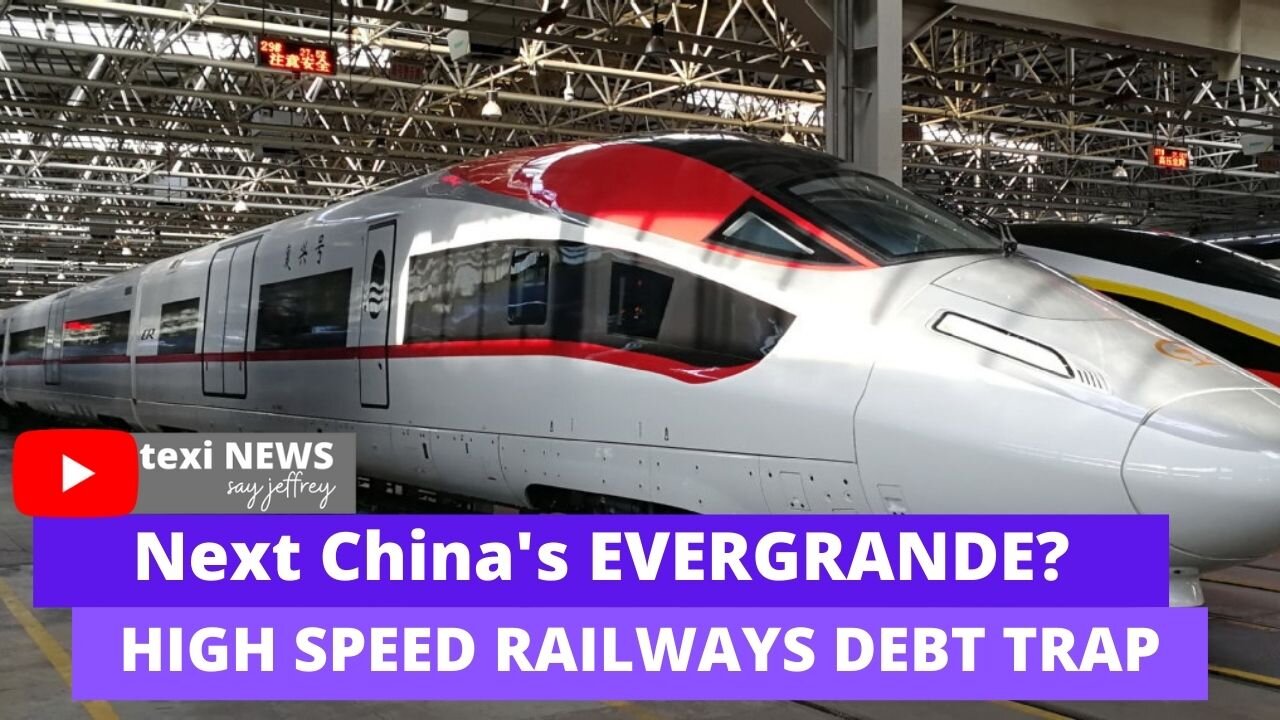Premium Only Content

China’s High Speed Railways Plunge from High Profits into a Debt Trap
China’s high-speed railways plunge from high profits into a debt trap.
Just over a decade ago, in 2009, China’s first long-distance high-speed rail (HSR) service covered the 968 kilometers between Wuhan and Guangzhou at an average speed of around 350 kilometres per hour. The feat was recognised as the Communist Party of China’s “debt-fuelled” response to the global financial crisis. It was a sort of a “Railway Keynesianism,” where China re-engineered its railway infrastructure to drive the demand for concrete and steel and create millions of jobs. In the decade that followed, China’s HSR network spanned over a track length of 38,000 kilometres, the highest in the world. Bagging a share of 26 percent of the country’s total railway network, HSR today connects almost every major city in China, with travel time just a couple of hours more than air travel, but with the comfort that only trains can provide.
China’s HSR obsession.
In the mad rush to gain the rich economic dividends that the HSR delivered on several profitable lines, especially the Beijing-Shanghai and Beijing-Guangzhou lines, provincial governments across the country have blindly tried to emulate the feat. However, most of such provincial construction has ignored the low- to zero- the potential of the expensive routes to attract similar volumes of passenger traffic and are running at high idle capacity.
Most new HSR lines in China have witnessed a sharp decline in their “transportation density”. Measured in passenger kilometres, it is an indicator that projects the line’s operating efficiency in terms of annual average transport volume per kilometer. For example, while the 1,318-kilometre Beijing-Shanghai HSR corridor’s transportation density was 48 million passenger kilometers in 2015 and continues to be high, the 1,776-kilometre Lanzhou-Urumqi line has only 2.3 million passenger-kilometers of transportation density. China’s overall transportation density of HSR was 17 million passenger kilometers in 2015, while it was 34 million passenger-kilometers for Japan’s Shinkansen in the same year.
-

Talk Nerdy Sports - The Ultimate Sports Betting Podcast
16 minutes ago4/16/25 - Blood on the Books: NBA Play-In Mayhem + MLB K-Fest
-
 LIVE
LIVE
Akademiks
1 hour agoDay 1/30. Tay K gets 80 Years in Prison. Offset P*ped out Moneybagg yo Girl. Cardi Confirms.
2,162 watching -
 1:08:46
1:08:46
Russell Brand
4 hours ago“Trans Women NOT Legally Women,” Supreme Court Declares – SF567
127K141 -
 1:03:32
1:03:32
Sean Unpaved
3 hours agoTodd McShay Breaks Down the 2025 NFL Draft
38.8K -
 49:07
49:07
Ben Shapiro
3 hours agoEp. 2180 - IMMIGRATION FIGHT: Will Salvadoran Illegal Immigrant Return?
46.8K25 -
 LIVE
LIVE
The Official Steve Harvey
2 hours ago $0.80 earned24 HOURS OF MOTIVATION w/ STEVE HARVEY
221 watching -
 1:04:12
1:04:12
Timcast
4 hours agoDemocrat Faces CRIMINAL CHARGE For FRAUD, Letitia James Targeting Of Trump BACKFIRES
182K95 -
 1:02:16
1:02:16
Steven Crowder
6 hours ago🔴 SCRAPYARD: JFK Assassination & Jewish Jokes That Should Never Make Air
348K328 -
 51:26
51:26
The Rubin Report
5 hours ago‘The View’ Co-Hosts Gasp as Whoopi Accidentally Echoes Trump Talking Points
73.8K59 -
 1:01:19
1:01:19
VINCE
7 hours ago'Big Tish James' Is About To FIND OUT! | Episode 23 (04/16/25)
341K334